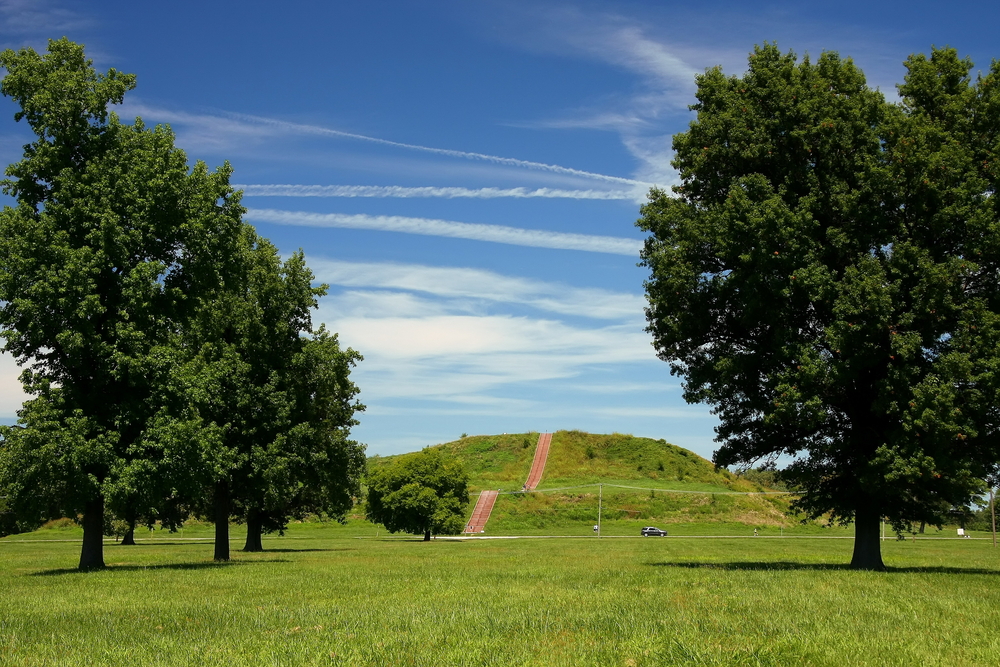Cultures
The Lost City of the Midwest

Image: Vladislav Gajic/Shutterstock.com
We often see pictures of the remnants of ancient civilizations from all over the world. There are pyramids, carvings, and stone markers all over the world that mark the passing of an ancient culture. What many people do not realize is that there are the remains of ancient civilizations right here in the United States. The most well known of which are Mesa Verde and Chaco Canyon in the southwestern desert. Slightly less well known is the ancient lost city of Cahokia that sits in Illinois, right outside of Saint Louis. Cahokia was the hub of the Mississippian culture that was practiced by the people in what would become the central and southern United States. Cahokia was the center of tribute and worship for many Native American people from about 800-1200 A.D.; long before europeans even stepped foot on North American soil.
Before roads, horses, and wheels came with the Europeans, the rivers were the highways of North America. the lost city of Cahokia sits on the Mississippi river near the confluence of the Missouri and Ohio rivers. It is a natural place for a city, and that is why Saint Louis sits where it does today. From that locale, trade goods were exchanged from all parts of North America and possibly even Central America. Cahokia was the home of the “big chief” that ruled over all of the smaller chiefdoms throughout what is now the Central and Southern United States. Religious ideas, trade goods, and mound building techniques were spread from Cahokia to everywhere the Mississippi watershed reached. The city and it’s surrounding farming complexes may have contained up to 30,000 people, and was more populous that London at the same time. The supportive farming complexes produced food for the city that allowed the increase in specialized crafting and technological advances. The rich Mississippian culture was splintered into the more modern groups of native peoples that lived in North America after the Europeans arrived.
What is left of the lost city are large earthen mounds that used to have wooden structures on them, and conical burial mounds. The largest of these earthen mounds is Monk’s Mound (named after french monks that took residence there in the 1700s) that is believed to have been the location of the temple and/or the “premiere chief’s” dwelling. At the base, Monk’s Mound covers more area than the great pyramid at Giza, and it reaches 100 feet off of the plain. Cahokia has been designated a World heritage site and National Historic Landmark site. There are miles of trails to explore, and a great museum. The Location is a great day trip when visiting St. Louis, or for those that live in that area. This is a great place to get some exercise, learn some history, and see the location of the Midwest’s lost city.
For further reading about Cahokia click HERE.





0 comments